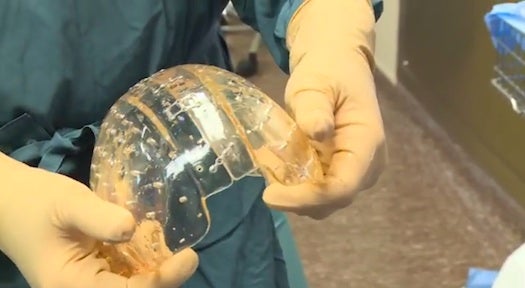Woman Has Her Skull Replaced With A 3-D-Printed Plastic One
The most significant skull prosthetic to date

A woman with a rare bone disorder has had much of the top of her skull replaced with a 3-D printed plastic piece, Wired U.K. reports. Three months later, she’s symptom-free and back to work.
The woman’s condition made her skull increase in thickness, giving her severe headaches and affecting her eyesight. The surgery, performed at the University Medical Center Utrecht in the Netherlands, gave the woman a replacement that closely matched the original shape of her skull. “It is almost impossible to see that she’s ever had surgery,” her lead surgeon, Bon Verweij, said in a statement from the university.
Verweij’s team has used 3-D printing to replace some portions of skulls before, but never to this extent, Wired U.K. reports.
You might see more such stories in the near future. While researchers are still working on 3-D printing soft tissues that are safe for transplants, 3-D-printed bony parts have already shown up in specific surgeries. As in the Utrecht case, doctors often emphasize how personalized such replacements can be.
Three years ago, a British man who had much of his pelvis removed got a replacement 3-D printed in titanium, the Ottawa Citizen reports. Printed titanium implants are made by spitting out titanium powder that’s then fused by a laser beam. The man’s doctor thought a printed replacement would fit better than a standard, handmade one. The man now walks with a cane, the Citizen reports.
In June 2011, a patient in Belgium received a 3-D printed titanium jawbone replacement. This was the first total lower jawbone replacement made to match a specific patient, the BBC reports.
And just last year, Livescience reported a Connecticut-based company received U.S. Food and Drug Administration approval to market a plastic replacement for 75 percent of the skull.